“This is Zululand, not Disneyland. You can’t book animals to show up,” our safari guide Christian reminded us. Granted, he had sort of taunted us because on the first game drive we went on he asked what we hoped to see; we said giraffes and he delivered about 40 giraffes to our view in front of us! Now we were getting in his Land Rover for game drive number two and I told him I wanted to see elephants. It’s not as if I had asked specifically for Dumbo or anything; however, he’s right – safari tours are unpredictable.
There are no guarantees when it comes to wildlife and a safari tour, and that’s one of the things I actually like about wildlife travel – it makes it exciting and unpredictable. And there have been times when I went on a specific trip to see an animal and we never did see it (see my story about the Great Bear Rain Forest) – it’s disappointing, but it’s still all part of the journey to me. Even though you don’t have any control over your ability to see a certain animal on safari, there are some things you can do to ensure you get the most possible out of your South Africa safari.
First, you have to choose where to go on safari; a national park or a private game reserve. I chose Thanda Safari, a private game reserve, for my South Africa experience. Only a 3-hour drive from the seaside town of Durban, Thanda offers a multitude of experiences that take you deeper than a typical game drive safari and ensures that you get as much out of your South Africa safari experience as you possibly can. And the touches of luxury weren’t too bad either!
Table of Contents
What is the difference between a private game reserve and a national park?
First things first, you must decide between doing a safari in a national park like Kruger, or a private game reserve. Both are vigilant in conservation and proper wildlife protection. However, the two offer quite different experiences. I’ve actually done both and they both have yielded very different experiences.
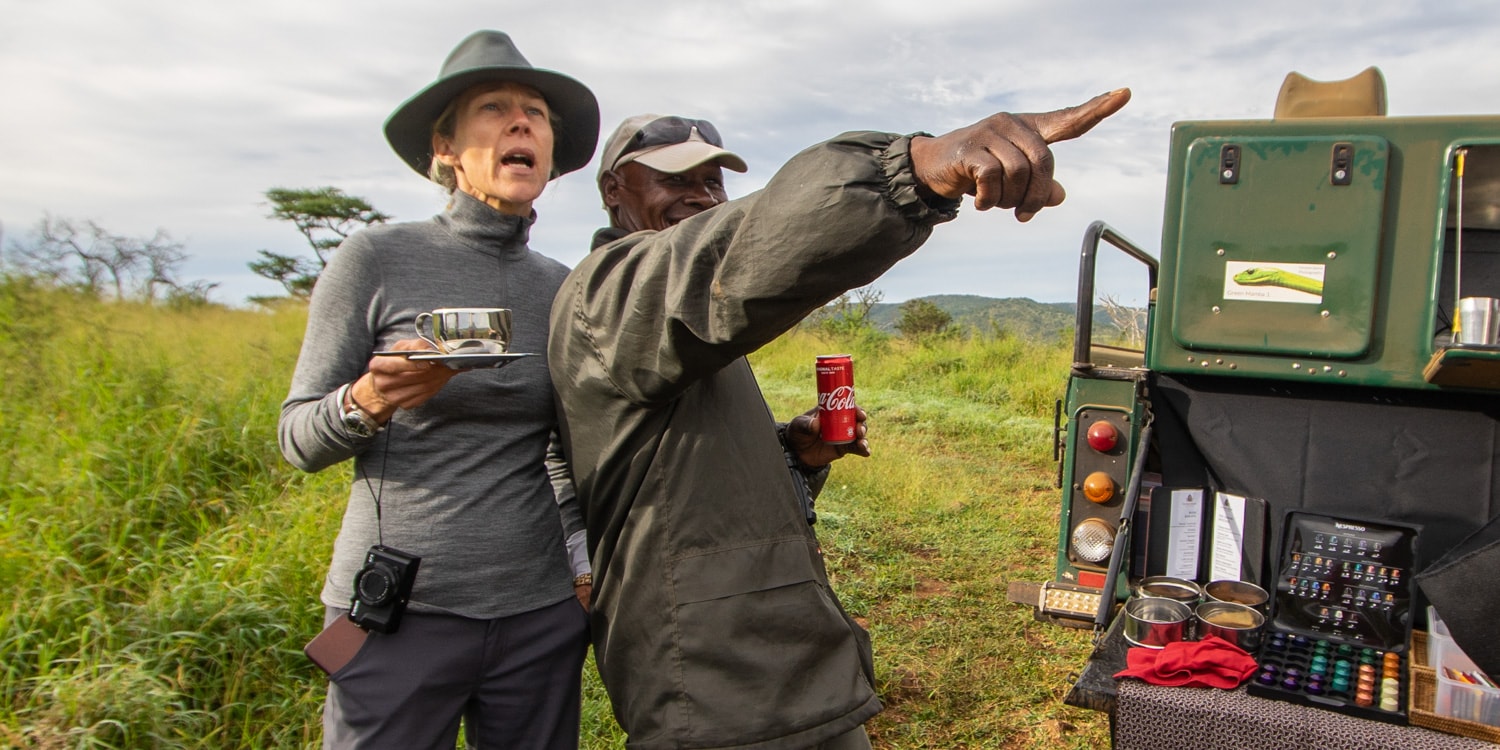
National Park
The parkland is government-owned and managed. These can be huge areas, however there normally aren’t as many employees to manage it. One of the biggest differences is the fact that off-road game viewing isn’t allowed in national parks; the drivers must stick to the prescribed roads. This can sometimes limit your ability to track and view animals. National Parks have opening/closing hours so no night drives are permitted and you won’t get experiences like walking safaris in national parks. However, in many national parks, you are allowed to self-drive if you are adventurous. Finally, there are normally more people in national parks so at times they may appear more crowded.
You’ll also find differences in accommodation; national parks are more budget-driven. You can still find lovely, quality lodging there, but not super high-end luxury lodges.
When I started traveling in 2006, I did a 2-day safari in Samburu National Park in Kenya. It was my first safari experience and it was lovely. Our typical day consisted of doing 2 game drives on the prescribed roads and then hanging out at the pool. It wasn’t luxury – but it fit my budget at the time! However, it’s not necessary for a safari to be luxury to be good; there are many affordable safari camps that are incredible experiences – like Porini Amboseli Camp in Kenya.
Private Game Reserve
The land is owned or leased by an individual or company and turned into wild. The owner owns the animals. It is a pure business concern, but it also is good for conservation. The accommodations are typically pretty over-the-top luxury (Thanda is no exception!). Reserves are limited to the amount of people they can host; therefore, the experience is more intimate. Plus, the private reserves normally attract some of the best guides since the pay is better.
One of the big differences is the types of experiences you can have at a private reserve. You can drive off-road to track and view animals, night safaris are available, and many offer walking safaris.
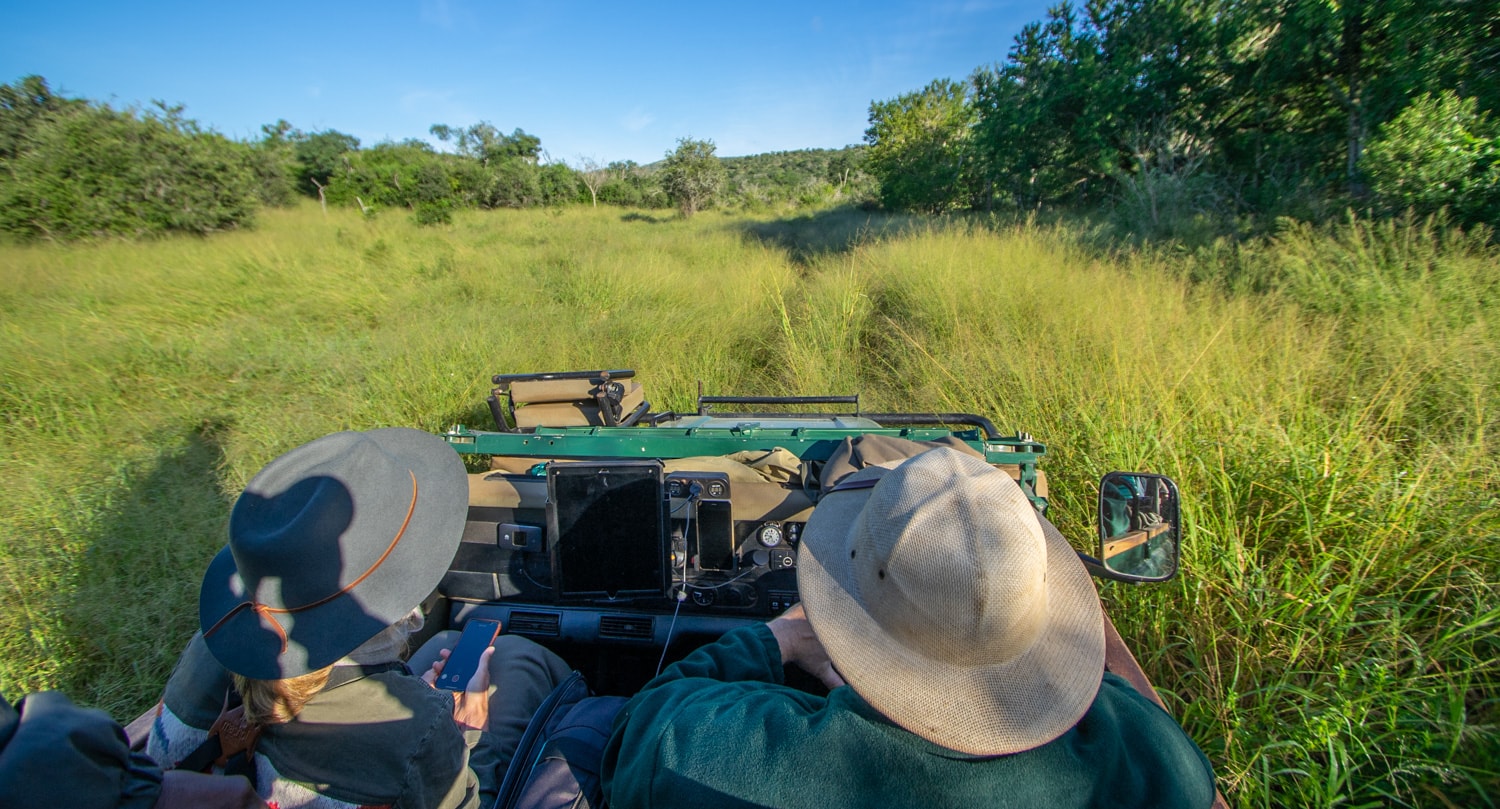
This being my second safari experience, I decided to do a reserve this time in South Africa. I went to Thanda Safari and had the experience of a lifetime.
See the Trip Advisor Reviews for Thanda Safari
6 Ways Thanda Safari Goes Deeper
Located in the wilderness of northern KwaZulu Natal, South Africa – Thanda is a luxury Big Five reserve. It is a game reserve that came to life thanks to Swedish investor, Don Olofsson. He and his family fell in love with South Africa specifically Kwazulu Natal. He bought land and turned it back into the wild. They only brought the animals back that were indigenous to the area. In the beginning, he built the villa as their home, and they had a small tented camp for visitors. Later it was decided to build the lodge with 9 luxury bush suites and a tented camp offering.
Based on my first safari experience in the national park, I had no idea a safari tour could be this diverse in experiences until I spent 5 days at Thanda. After the trip, I walked away with so much wildlife knowledge filling my head that I couldn’t wait to share it all! I also walked away with incredible photography and a new, renewed, relaxed attitude.
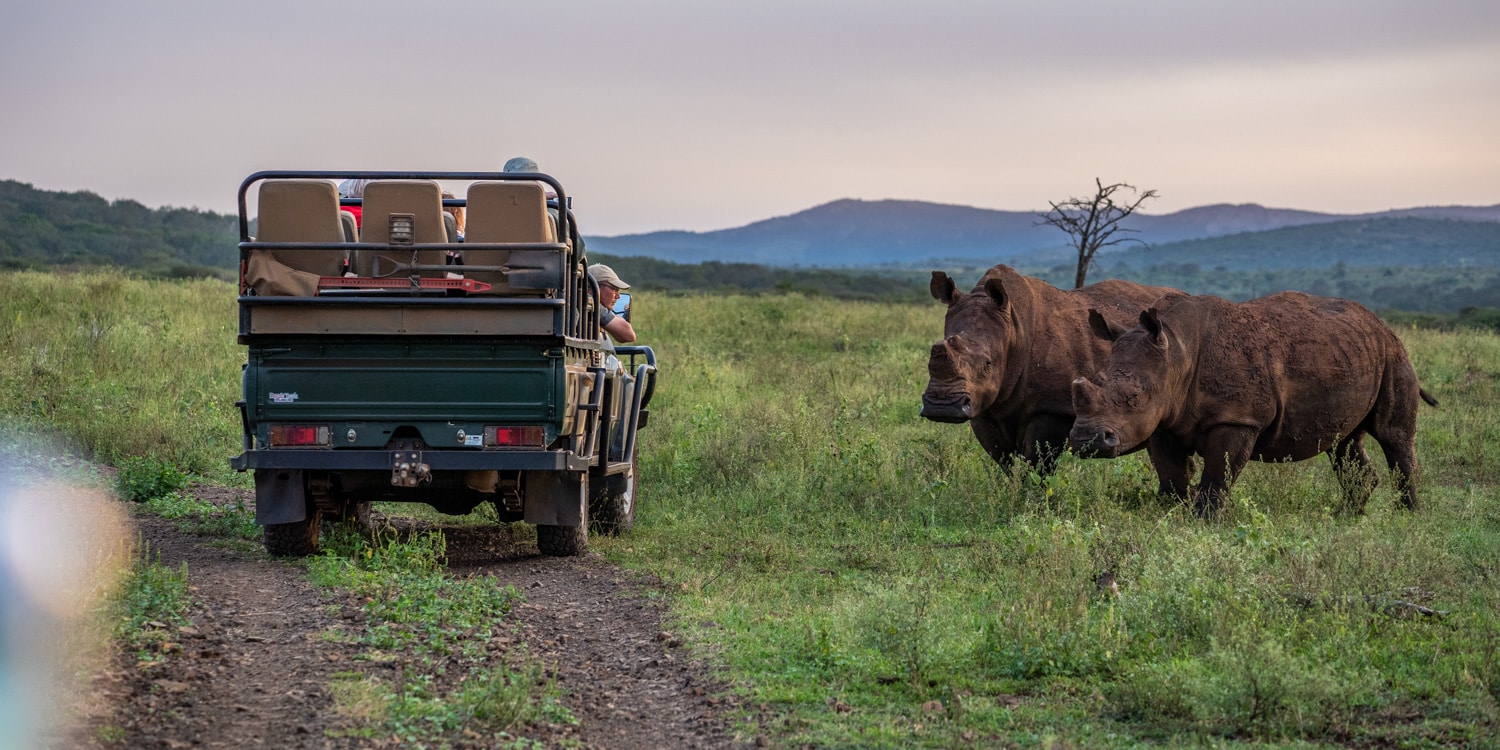
Of course, Thanda Safari offers your typical wildlife drives in the morning and evening, plus special night drives. The first time we went off-road through the bush following elephant tracks, I giggled with excitement as we bounced around in the Land Rover! On our first drive, we saw more animals than I had ever seen on my first safari. The drivers/trackers and guides were incredible at spotting animals and maneuvering us so close I could practically touch them; leaving my heart in my throat at times.
But it was the little touches and other offerings from Thanda that made it much more of an immersive and deeper South African safari experience that makes me label it a “trip of a lifetime”.
1. In the Path of Wildlife/Tracking
We stop on the ridge overlooking the fog-covered valley and Amanda holds up an antenna that looks like it’s from the 50’s. There’s a bunch of crackling sounds. Suddenly you hear a faint beep (similar to a van backing up) and Amanda starts to turn the antenna around which affects the frequency of the beep. “The strength of the beep indicates how close they are,” Amanda explains as she continues to fine-tune the direction of the antenna to the beeping noise.
Amanda is the Ulwazi program coordinator who is showing us all about how she tracks the animals in the park. “My job is to make sure they stay out of trouble,” she explains.
We hear a nice ‘crispy’ steady beep and know we are locked in on the direction of the collared cheetah. Driving in that direction, we stop occasionally to get another reading. Quietly we pulled around a corner and there she was – the female cheetah with her fresh, bloody antelope kill.
I’m startled as she looks up when we pull into the deep grass only 30 feet away from her. It’s here where we spend the next hour just watching and observing this beautiful creature devour her catch. We sat there silently in the Land Rover hearing her crunch on bones, observing her behavior, and watching her look up occasionally a bit skittish. It felt like a dream.
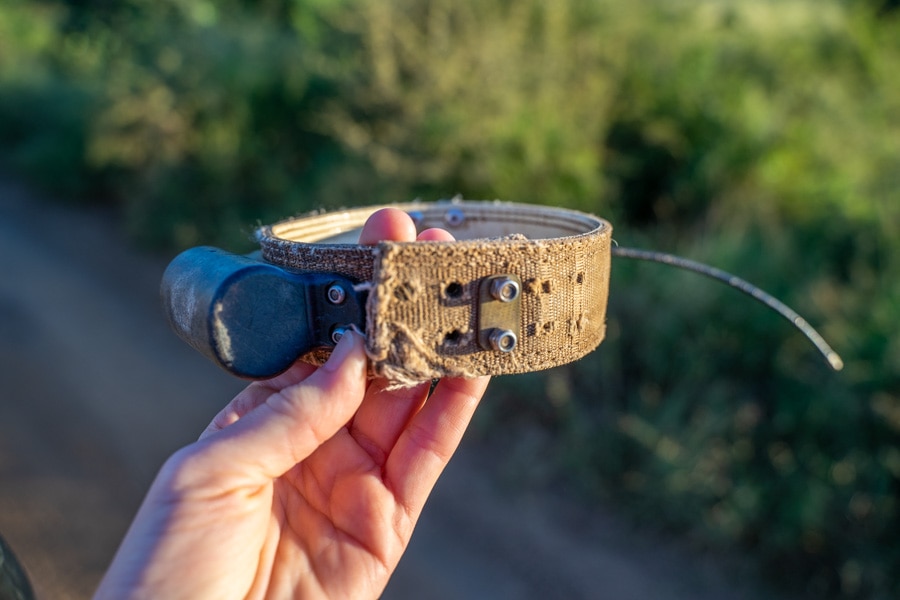
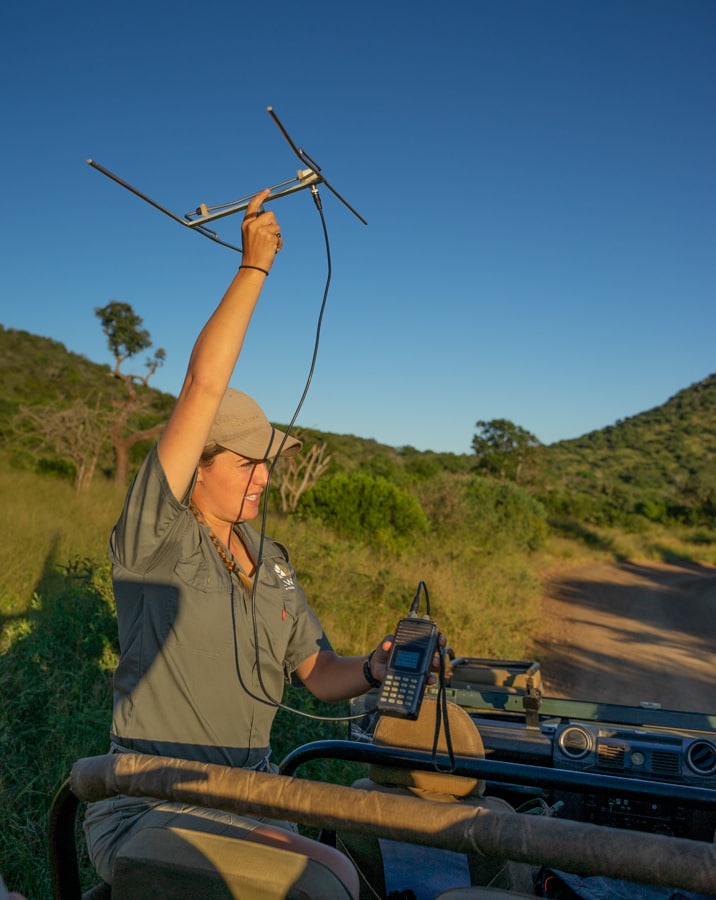
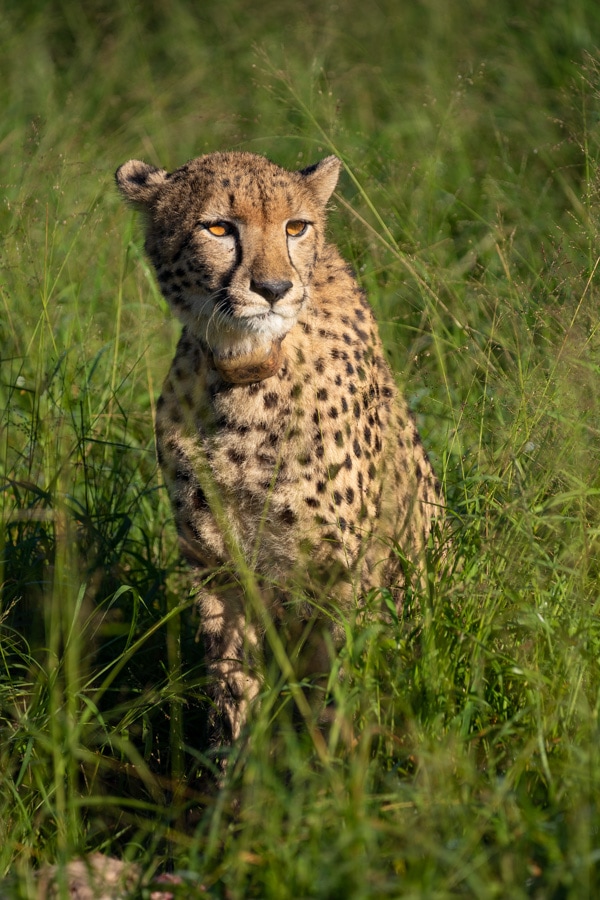
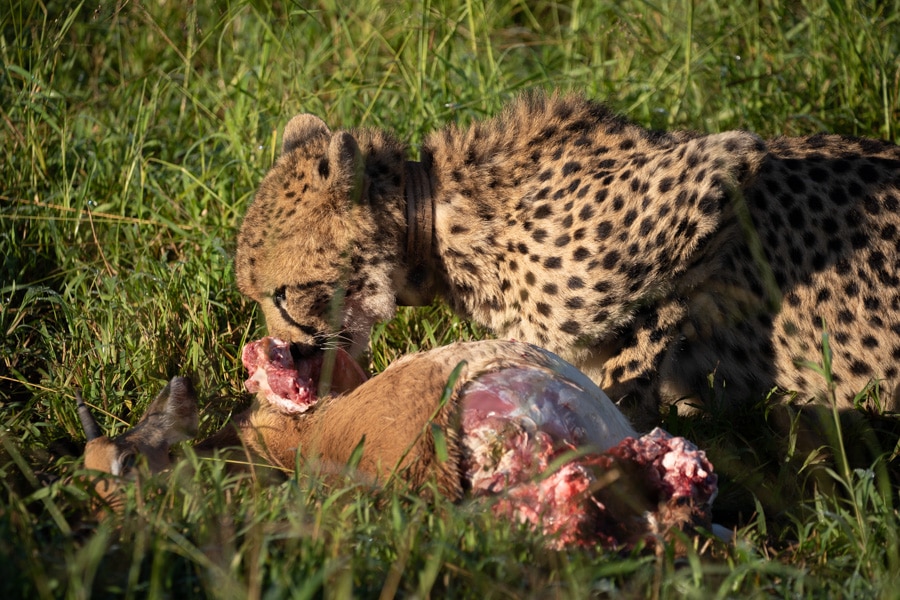
The reserve is home to five cheetahs. They are dainty animals who are on their way to critically endangered status. In addition to the many animal threats for them, there has also been habitat loss for them. There is a small gene pool left globally; less than 7,000 in the wild. It’s the reserves, like Thanda, who are doing lots of the breeding and conservation work for cheetahs, and I felt so lucky to be a part of it even if just for a morning.
Thanda offers cheetah, rhino, and elephant tracking with a member of the Wildlife Conservation team to learn more about the conservation efforts. Cheetah tracking was one of my many highlights. Not only did we learn all about conservation, we learned how to track them ourselves as well as the costs associated with protecting these sleek cats. It was a unique look behind the scenes and a great way to mix up the typical game drive.
2. Tracking Rhinos By Foot
I don’t think I realized how big of a deal this was until the jeep pulled away and we were all just standing there – on the ground – with no transportation. My heart raced.
“I’m not saying we are going to find a rhino, but we will try,” said Truman, the Reserve Operations and Security Manager. “It’s quite a windy day…,” his sentence trailed off as he looked around nervously. I could tell he was trying to decide if we should do this walk on foot on such a windy day. He went on to explain, “When it’s windy, animals don’t hear as clear, and our scent travels quicker. Plus, we don’t always hear what’s happening around us.”
As soon as I took a few steps, I realized I had a whole different safari perspective. I sort of felt like what it was to be an animal living in this tall grass – wondering what predator was around the corner. It’s easy to feel safe in a jeep, but on the ground, I really felt exposed.
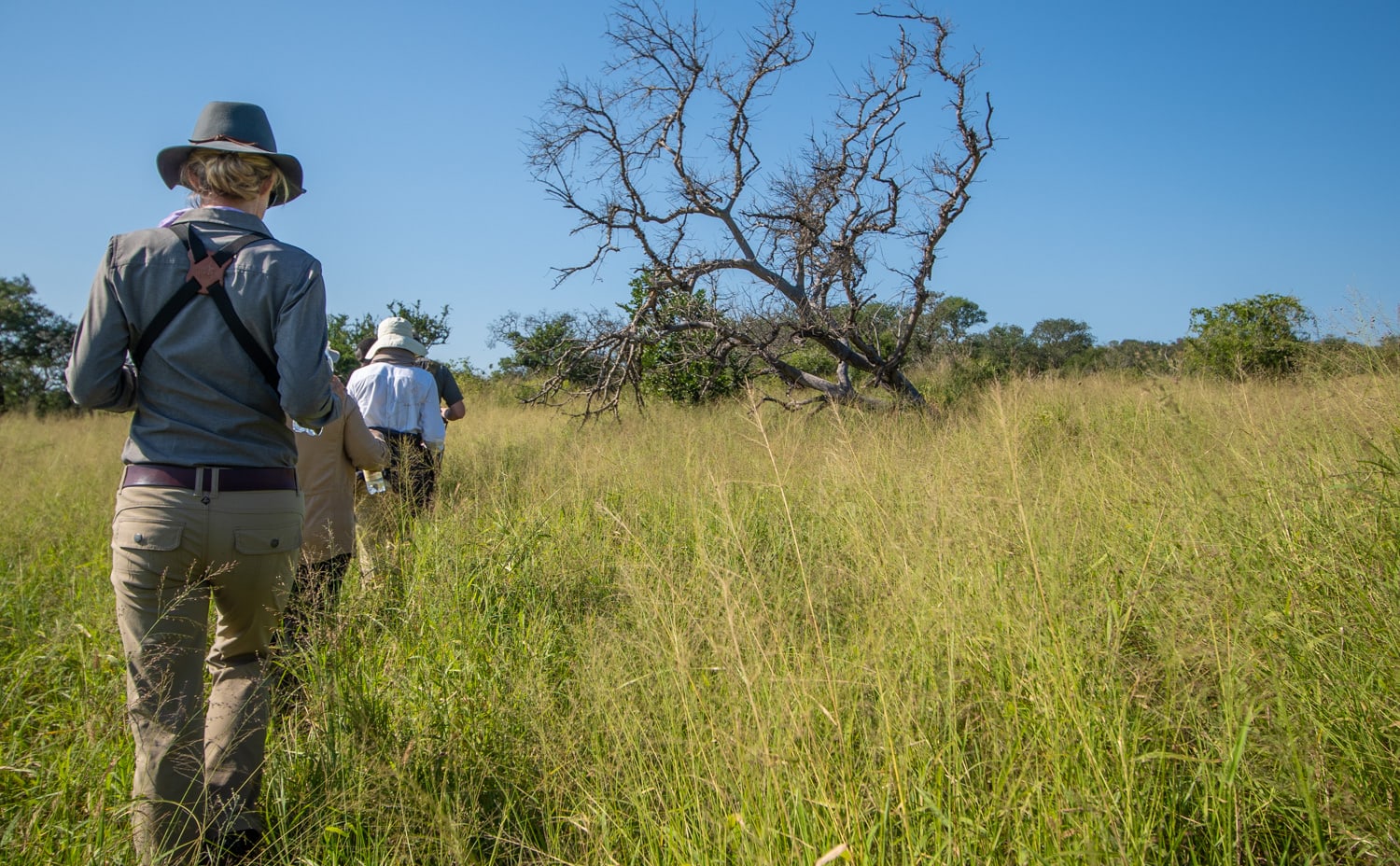
It was a complete adrenaline rush. As Truman stopped to show us dung, footprints, broken branches, and flattened grass where you could tell animals had been sleeping, I was on high alert. My heart raced and all of my senses heightened, as we bushwhacked through shoulder-high grass. I worried about tics, bees, cape buffalo, and lions – strangely you want to see them and you don’t at the same time. It’s a strange push/pull on your emotions.
After sweating and walking through the high grass and trees for 2 hours I was exhausted. But suddenly I saw Truman hold up his hand indicating we should stop. He then motioned for us to get down low. I followed Truman’s pointing finger and saw an animal move in the distance. A white rhino and a 2 1/2-year-old baby were feeding just ahead of us. They were luckily about 200 feet away, but it was pretty incredible to watch the animals while feeling so vulnerable.
After our walk that day, Truman talked to us about the Anti-Poaching Team and the work the reserve does to specifically protect the rhinos in the reserve. It was a fascinating look into the history and current-day issues of the ‘war on poaching’.
Yes, it was cool to see the animals on the ground, but the experience was much more about the feeling of vulnerability and senses to me. Rhino tracking by foot is a unique sensory experience.
3. Photography Lessons On Safari
Let’s face it, a safari is an investment and so is photography. You really want to make sure you are maximizing your benefits in both of these areas yielding the best images you possibly can. Professional photographer Christian Sperka is the resident wildlife photographer at Thanda Safari. He works as a Specialist Photography and Field Guide and also teaches wildlife photography at the reserve. Every guest is offered a complimentary photo workshop session talking about best practices for shooting wildlife in the reserve. He does this for both DSLRs AND smartphones!
However, if you really want to improve your photography and get the best pictures possible, then having Christian drive/guide you in his special photography vehicle, the Green Mamba, is a one-of-a-kind safari experience. The vehicle is private and set up specifically for photographers with bean bags, room for extra equipment, and padded floors for kneeling.
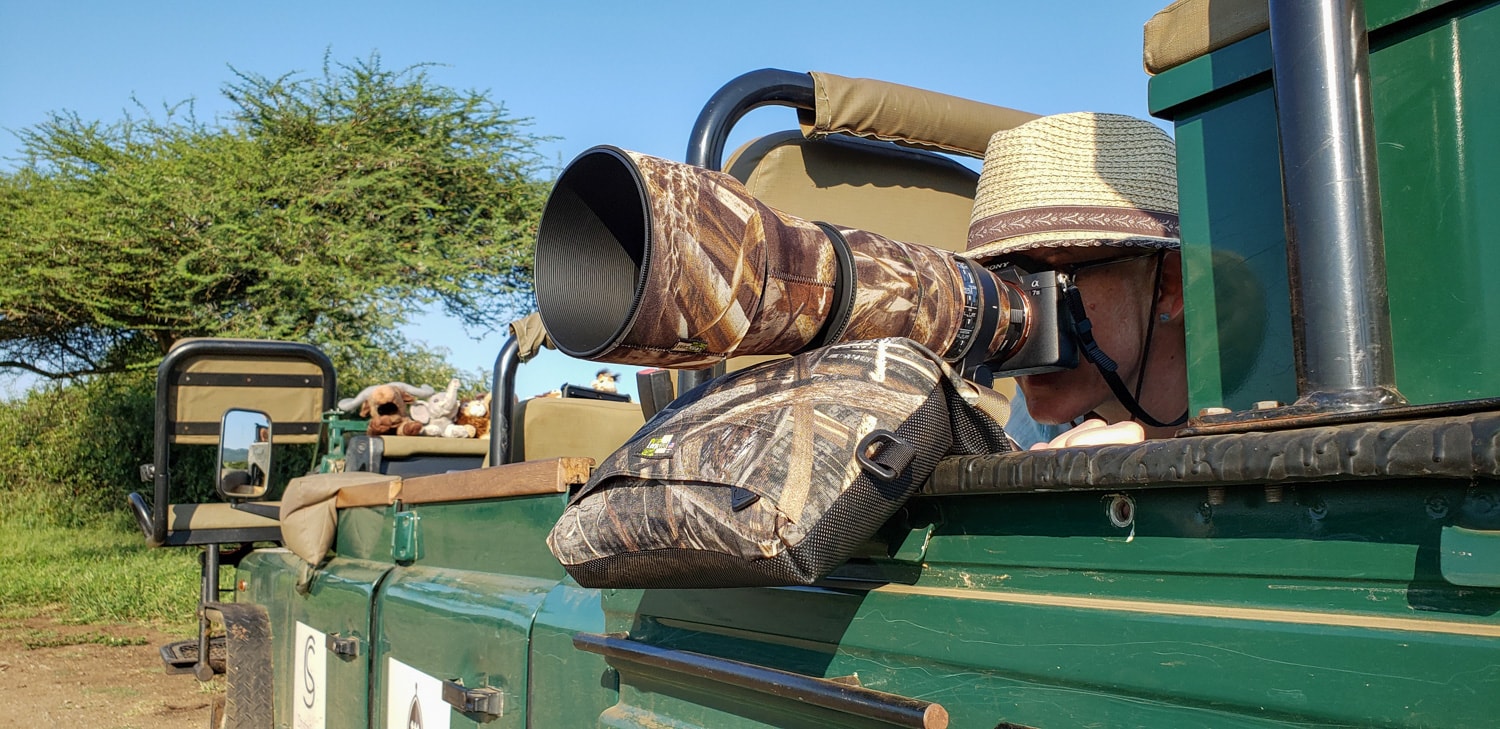
But it’s not just about the vehicle, Christian also will set up shots for you ensuring that he positions the vehicle in the perfect placement for lighting or that sunset shot. He knows the animals so well that he can anticipate where they will go and where exactly the Green Mamba needs to be to get the shot. In addition, he takes into account the lenses you are using and how close you will need to be for a successful photo shoot. He’ll review your images and provide tips as well as even shoot candid images of you or your group the entire time.
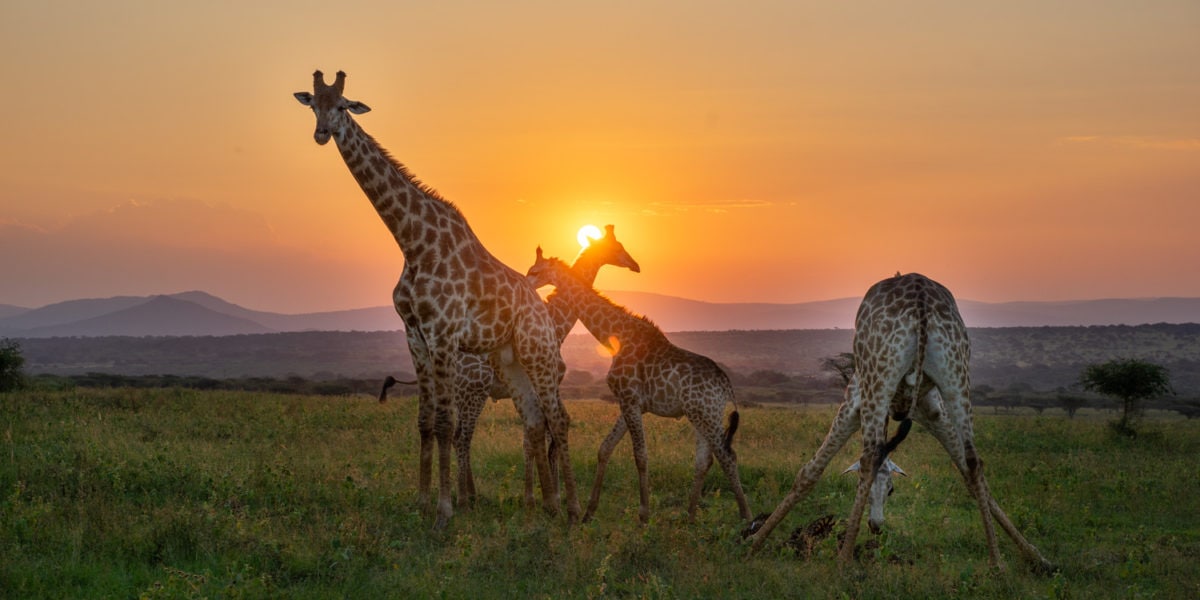
My photography from my first safari to this Thanda safari improved immensely. I was so happy with how close we could get to the animals that some of my best shots came from my Galaxy S9+ phone! When you have a professional photographer as your guide, you can’t go wrong!
In addition, the Green Mamba isn’t only designed with photographers in mind, it also has other perks. Every morning at Thanda we had a 5:30 am wakeup call and were on our game drive by 6 am. Christian’s pimped-out photo safari vehicle also has a coffee bar on the back! We stop mid-way through the morning and Christian transforms from photographer guide to barista and makes coffee drinks in the bush!
And for evening drives, it turns into a martini bar! My favorite memory is when we did a martini happy hour for our evening drive and giraffes and zebras came and joined us for a drink near the watering hole!
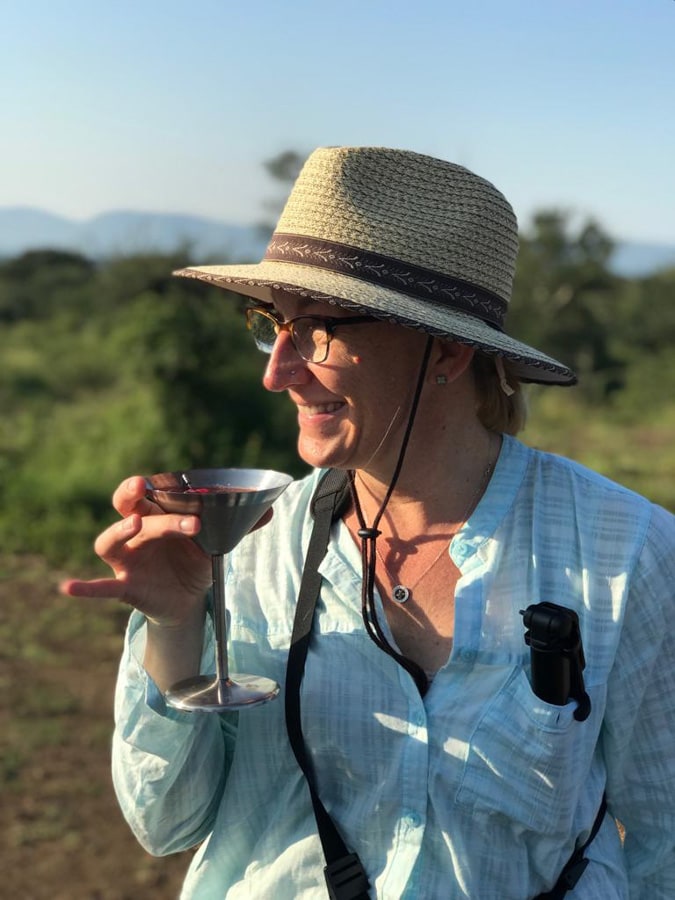
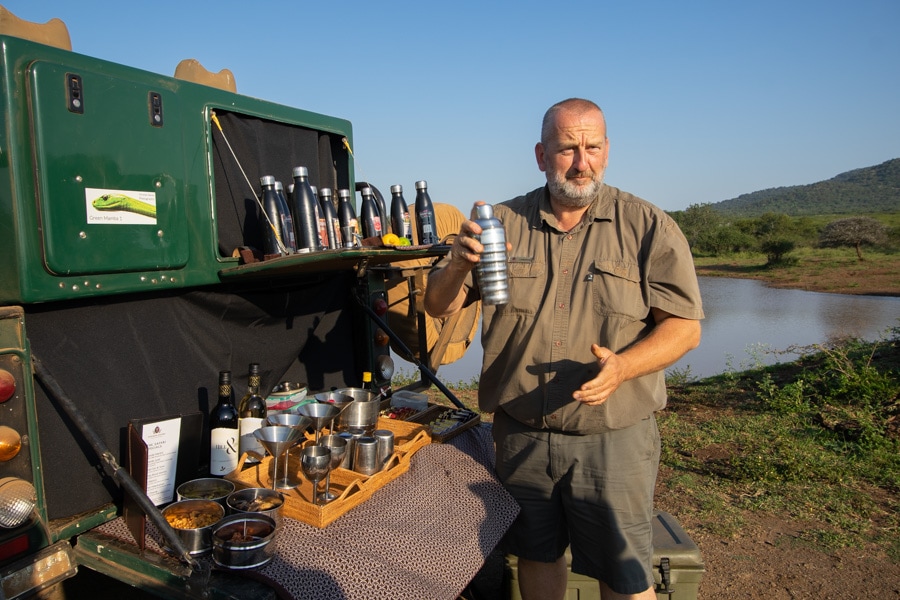
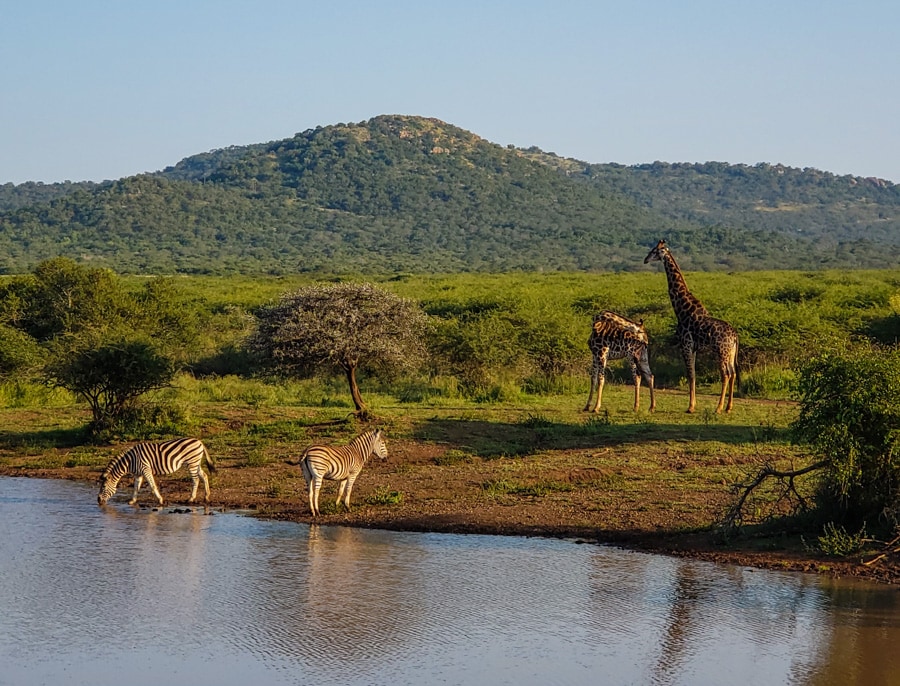
4. Visit Local Zulu People
Every morning and evening you go on a game drive at Thanda. However, that leaves your afternoons free. There are many activities that you can choose from – like visiting a local school or farmstead. We did both! We toured around the buildings and sat and talked to the elders, teachers, and kids about traditions and culture.
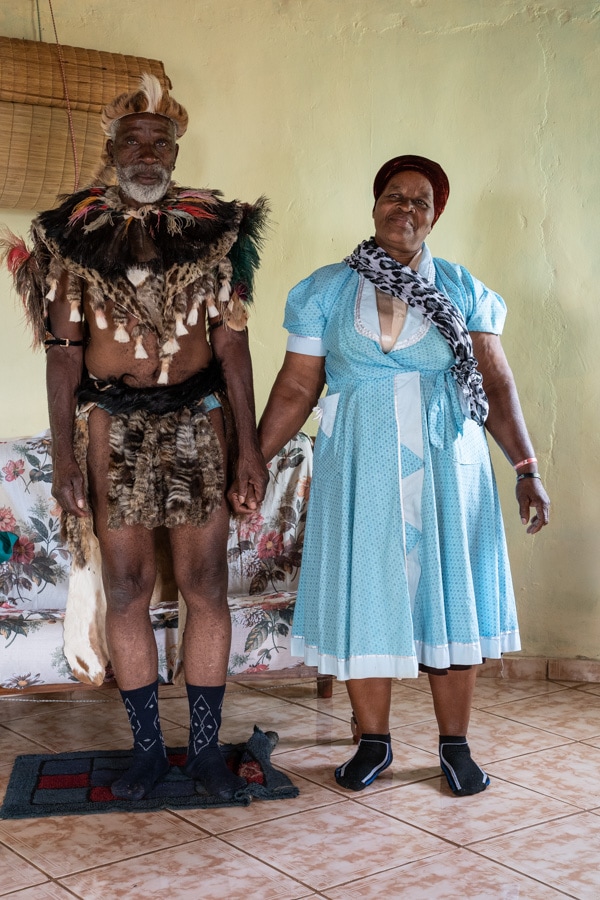
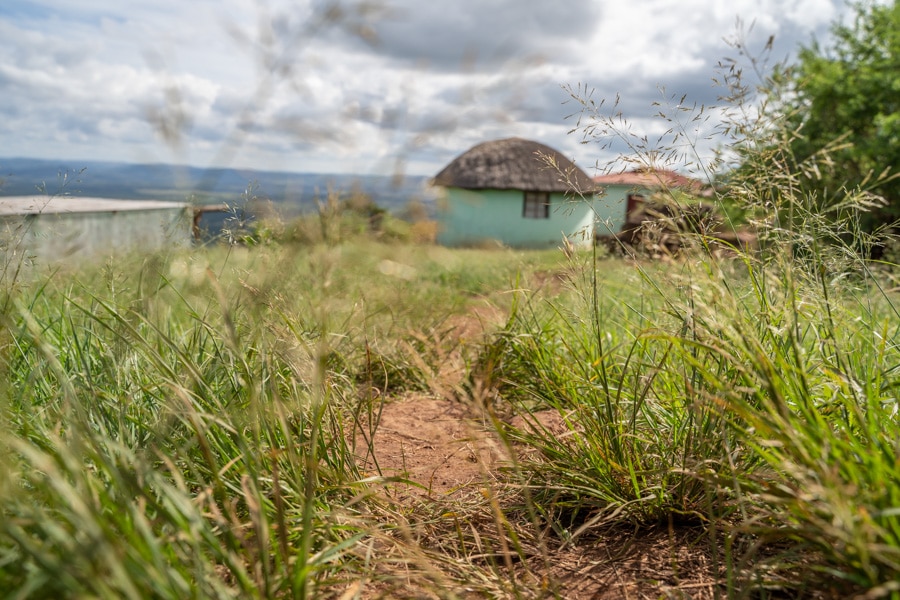
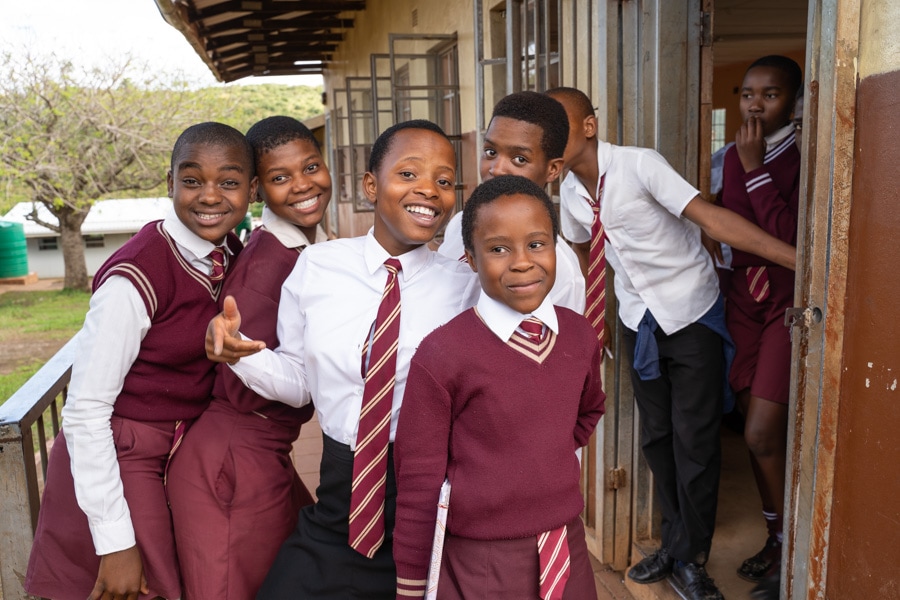
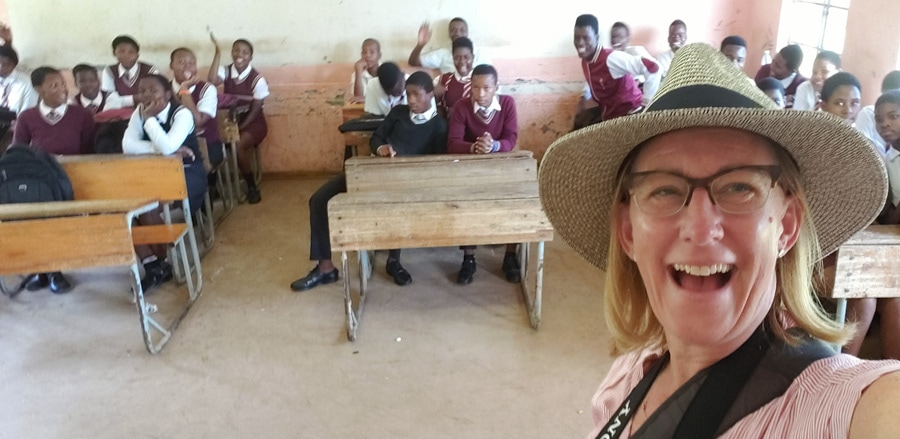
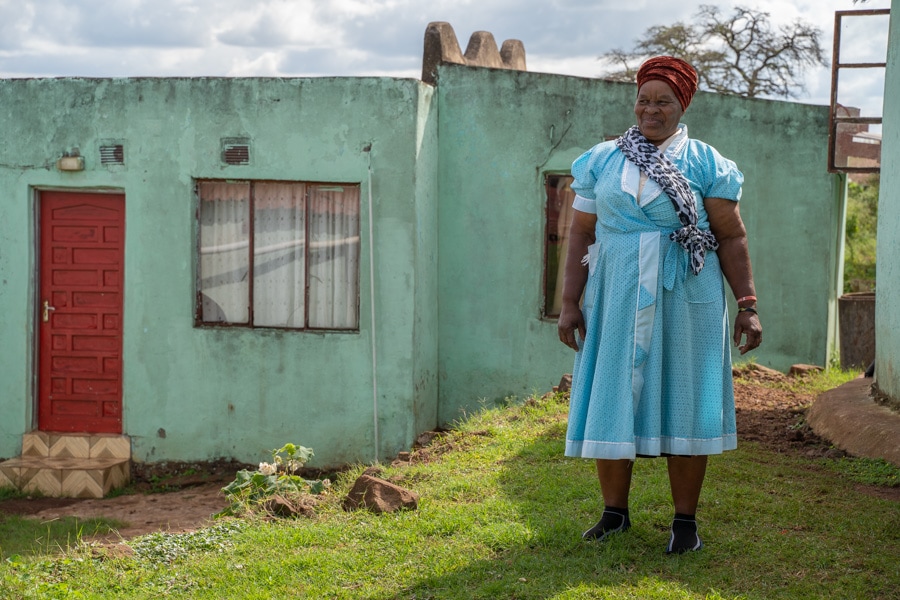
5. Volunteering
There are many volunteer opportunities in South Africa – but if you want to work with wildlife and do hands-on work in conservation and wildlife management, then check out Ulwazi Research. We spent a day there doing some hands-on work and research ourselves. In addition to constructing bee hotels, we went out with the research team and tracked and observed cheetahs and elephants. They offer 1, 2, and 4-week programs and the facilities are lovely. Work on existing projects such as cheetah and elephant tracking/monitoring, participate in animal inventories, map invasive alien vegetation for removal, or build and develop an environmental awareness program in the surrounding communities. I loved this offshoot of Thanda as an option for people who want to travel deeper into a wildlife reserve and become a part of a conservation team!
6. Go Behind the Scenes of Wildlife and Park Management
Rhino Dehorning, and Animal Care
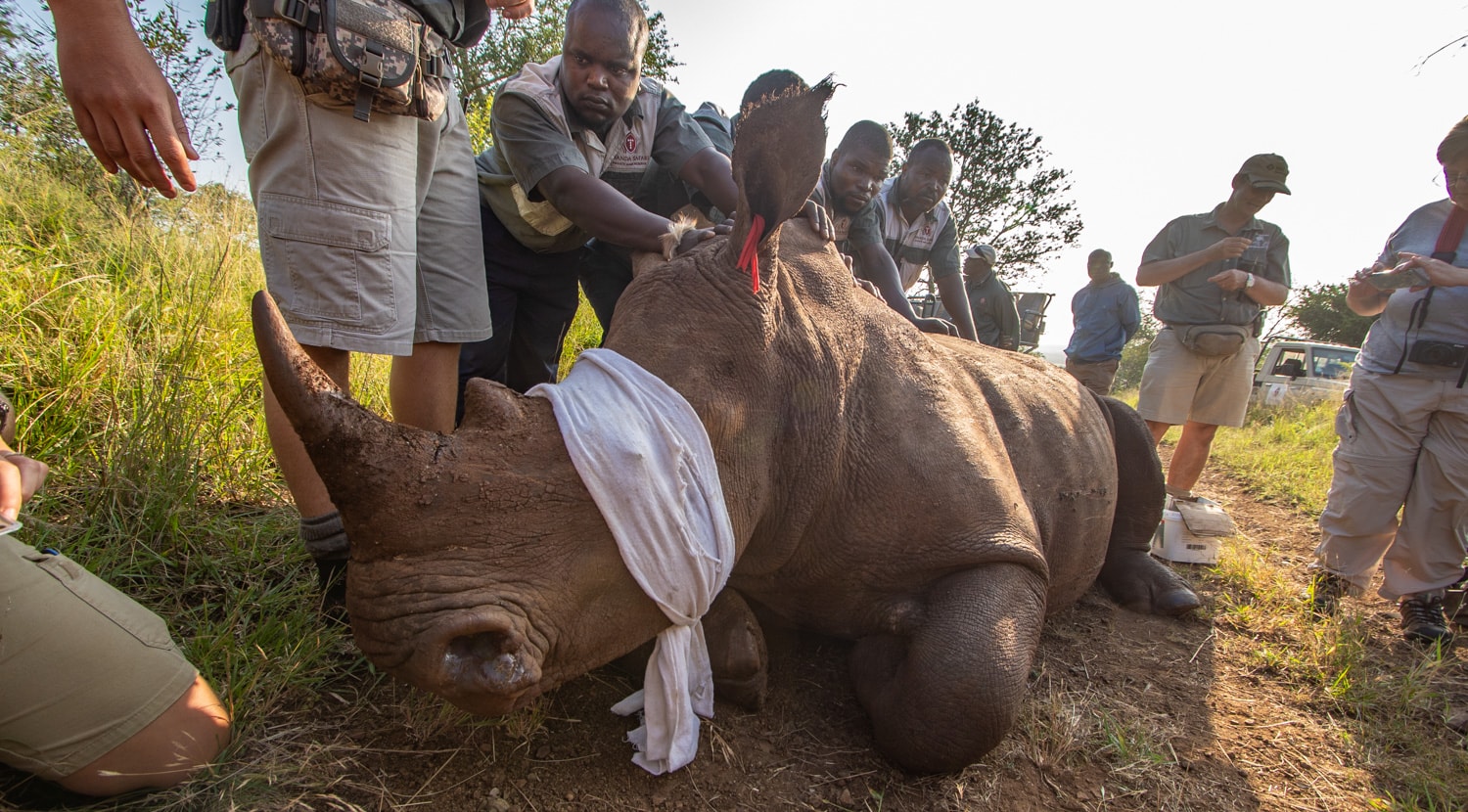
I was able to observe a rhino dehorning while staying at the reserve. Thanda Safari has been dehorning their rhinos to decrease the chance that the rhinos will be killed by poachers who are after the horn. Plus, dehorning is also done because the neighboring parks dehorn. This does not harm the rhino. The horn is made of keratin; similar to fingernails or hair, their horn grows back every 2 years. So, consider it like a haircut! Being able to see a dehorning (which is an option for guests), was a highlight as it made me understand the whole process and poaching crisis better. In the last decade, over 8,300 rhinos have been lost to poaching which has led to their critically endangered status.
In addition to dehorning observation, you can also observe other animal management.
Speak with the Wildlife Manager
“We need to know how much food we have for prey and that determines how many predators you can support. If we have X kg of food, you then need to know how many animals you can have to eat the food. Twelve lions means we can have 5 cheetahs,” explained wildlife manager Mariana.
If you are anything like me – this type of conversation excites and fascinates you. For those who want to dig deeper into the Reserve business, wildlife management, or security, you can request to talk to Mariana to learn more.
Not everything in wildlife management is a simple formula though as Mariana continued to explain, “It’s very complicated how the prides are formed and you can’t just bring in new lions and put them in the pride – they won’t be accepted. We have to start a new pride and hope that they meet up somehow and join each other. If you make the wrong decision, you can’t fix it quickly.”
She also organizes the Rhino darting and other medical observations with guests as well as leads the animal inventory every year. To learn more about that and other things such as fire management and water point management, she’s a super person to sit and talk to!
How Much Does It Cost to Go on Safari at Thanda?
I will first preface this with – this was one of the best trips I’ve gone on in 13 years of traveling around the world. And it wasn’t simply about the luxury, for me, it was more about the extra experiences that took me deeper into the reserve understanding the conservation programs, animal management, and meeting the locals.
Safari’s are expensive, and when you are a place that has been named one of the World’s Leading Luxury Lodges – you have to expect that you will pay for that experience.
There are a number of different lodging options at Thanda ranging from super luxury to luxury, to glamping, to volunteering!
Safari Lodge
Racking up a bunch of awards, Thanda Safari Lodge has been named the World’s Leading Luxury Lodge and I can totally understand why! I can’t even believe that I was lucky enough to stay there! The lodge is comprised of 9 different suites that are free-standing, large, exquisite works of architecture. Each has a living room area, a bedroom, and a big stone fireplace that connects the two. The bathroom is as large as my studio apartment with indoor and outdoor showers and avbig soaking tub. And finally – the outdoor deck is as big as the villa with a gorgeous personal plunge pool, and gazebo with a lounging bed. Animals are able to walk around freely outside your door since the lodge area isn’t fenced in! I was hoping for an elephant to come for a visit to my plunge pool!
$500 to $670 USD per night per person. All food/bev included plus 2 game drives a day and photo course.
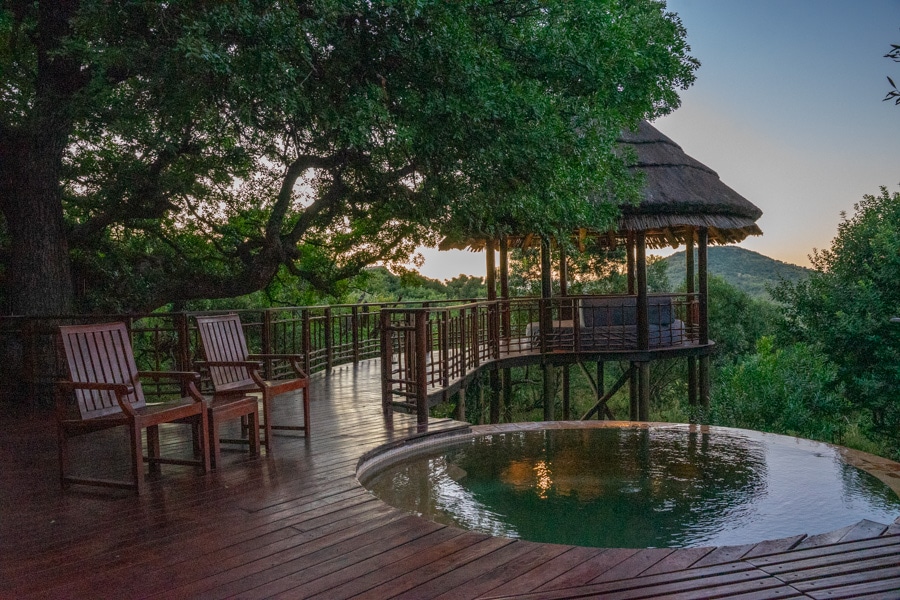
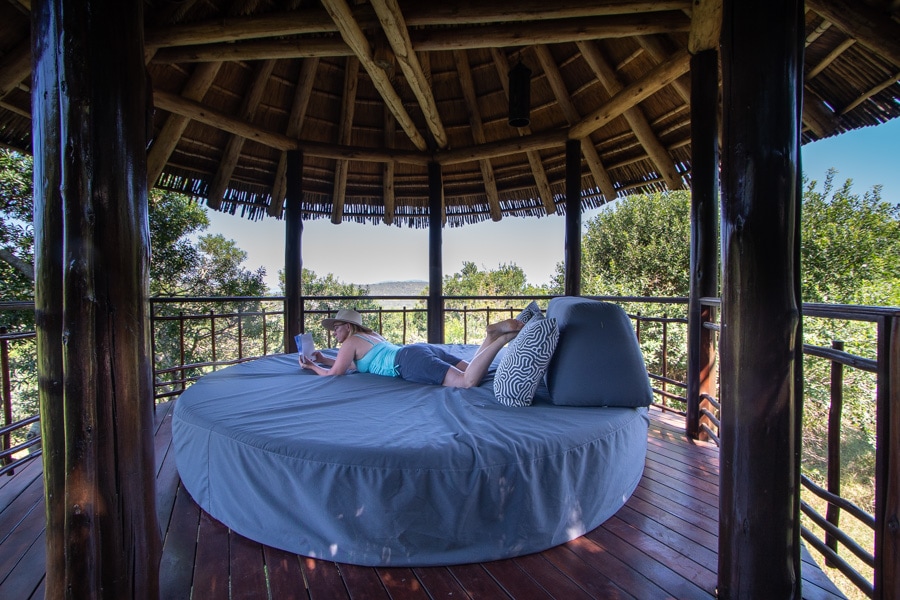
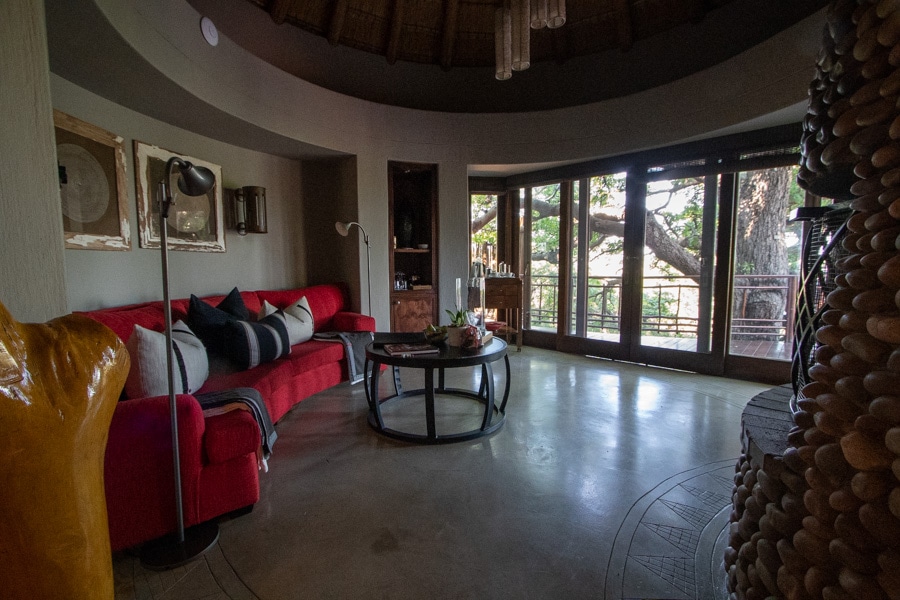
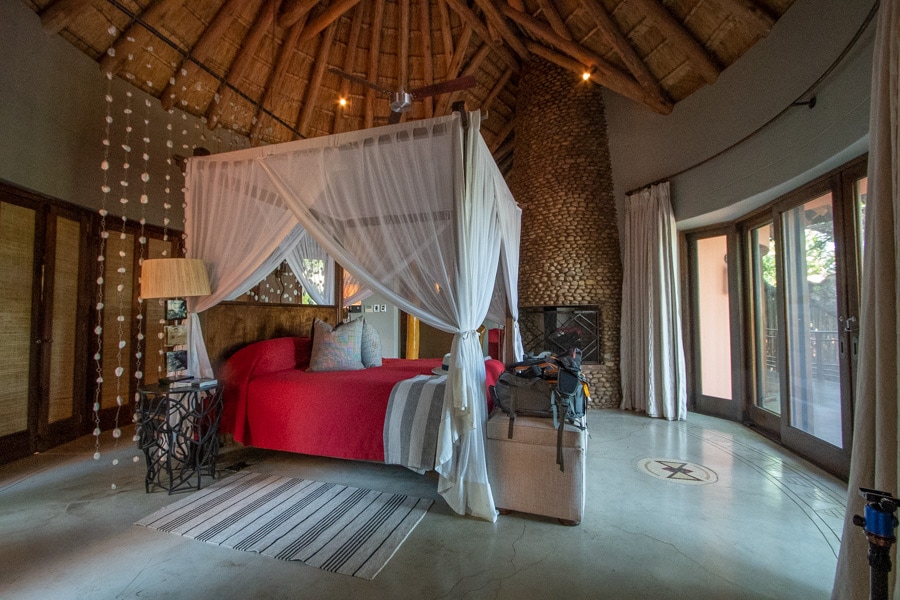
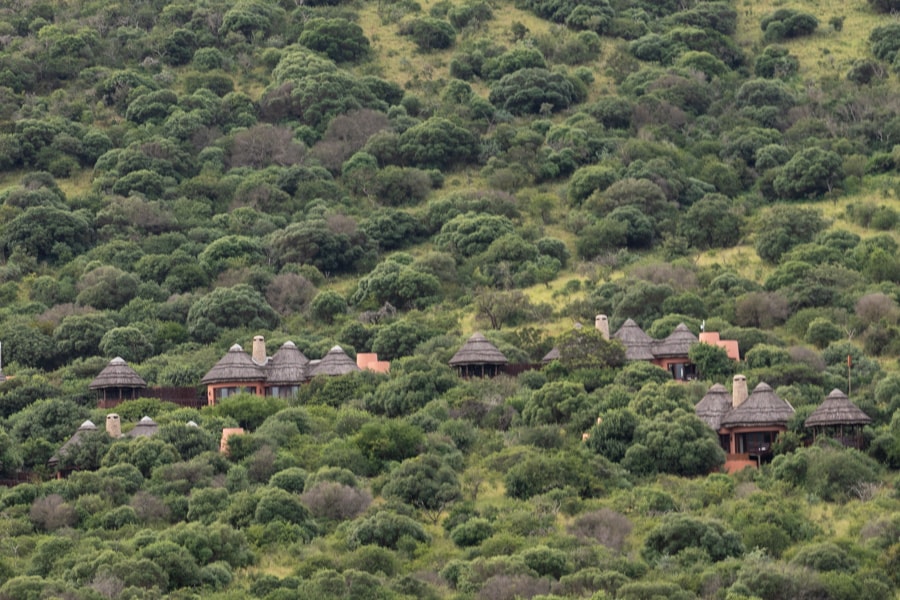
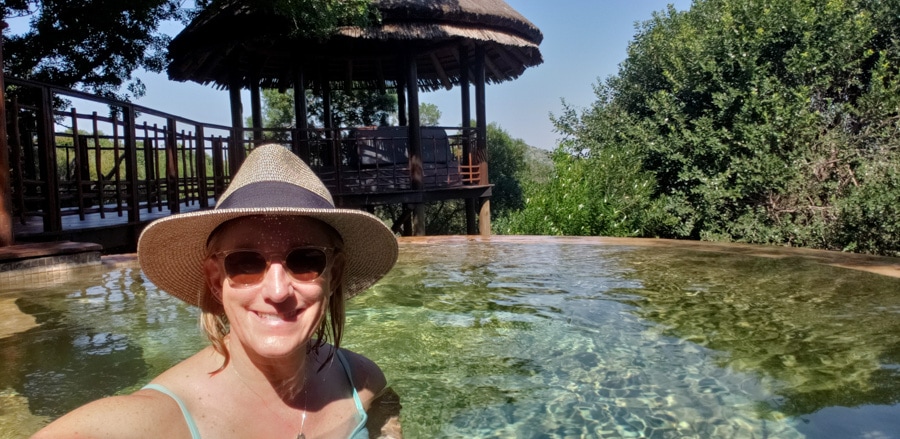
Villa IZulu
The first few nights we stayed in Villa IZulu, a private home in the reserve. This 10,700 sq ft home sleeps 6 to 10 guests complete with a pool, open-air design, library, game room, wine cellar, decks that overlook a watering hole visited by the Big 5, a helicopter landing pad, and a butler. I basically entered another world….one that I’m not accustomed to, but loved! In all seriousness though – it is a really cool option for a large family safari trip – and the helicopter is optional!
$3000 to $4000 USD for the entire villa, butler, cook. All food/bev included plus 2 game drives a day and a photo course.
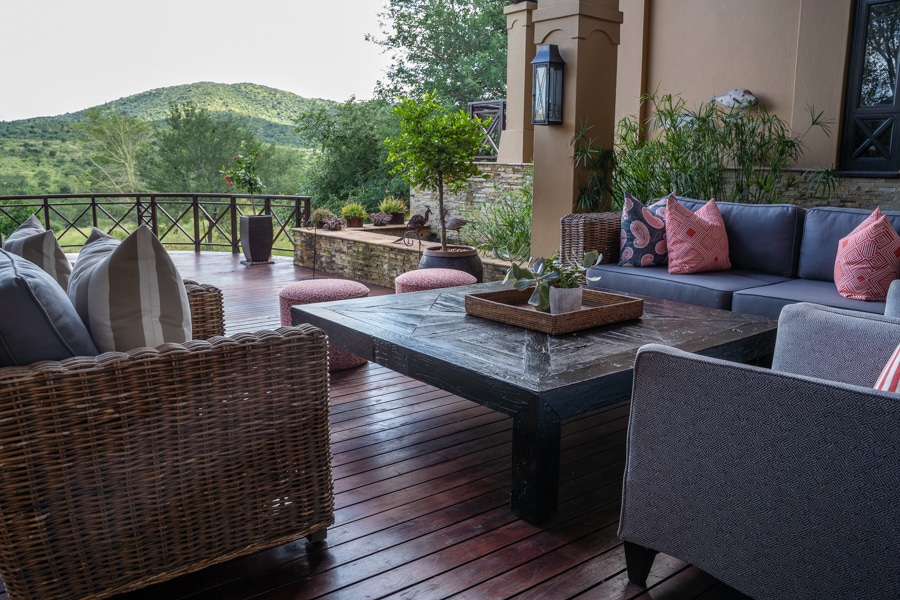
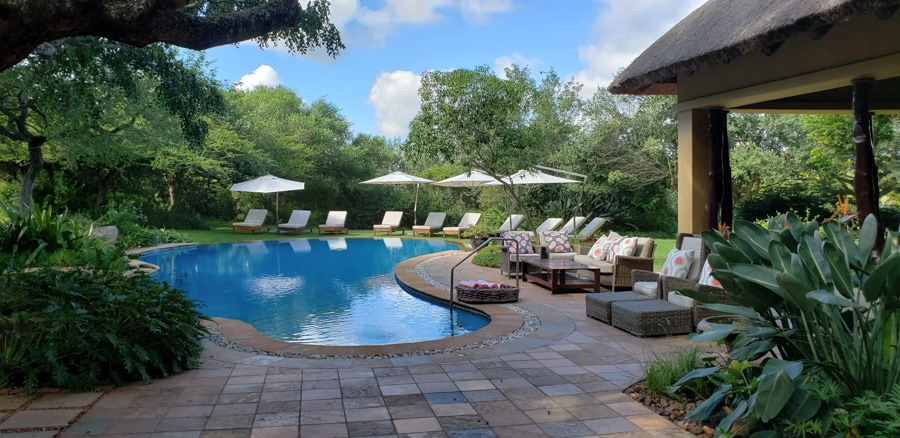
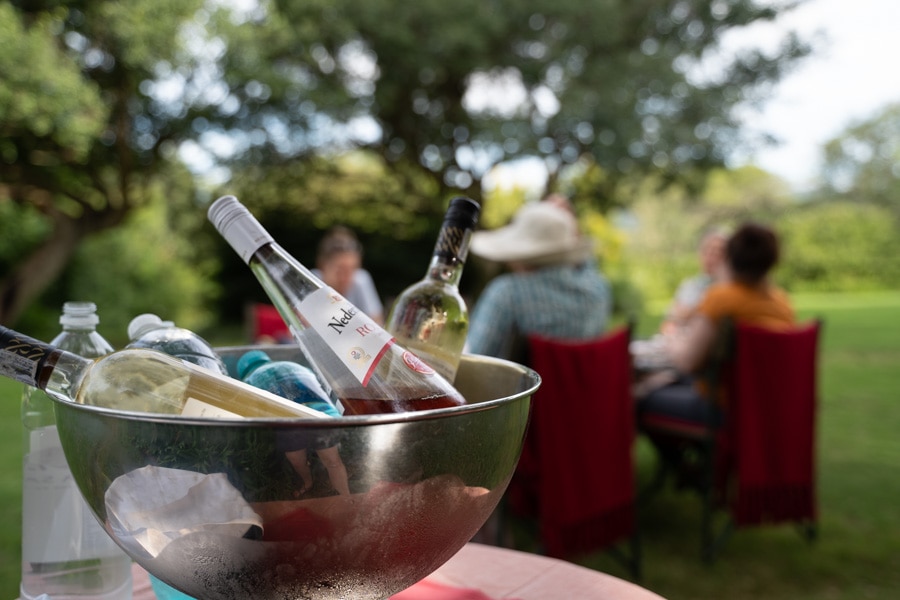
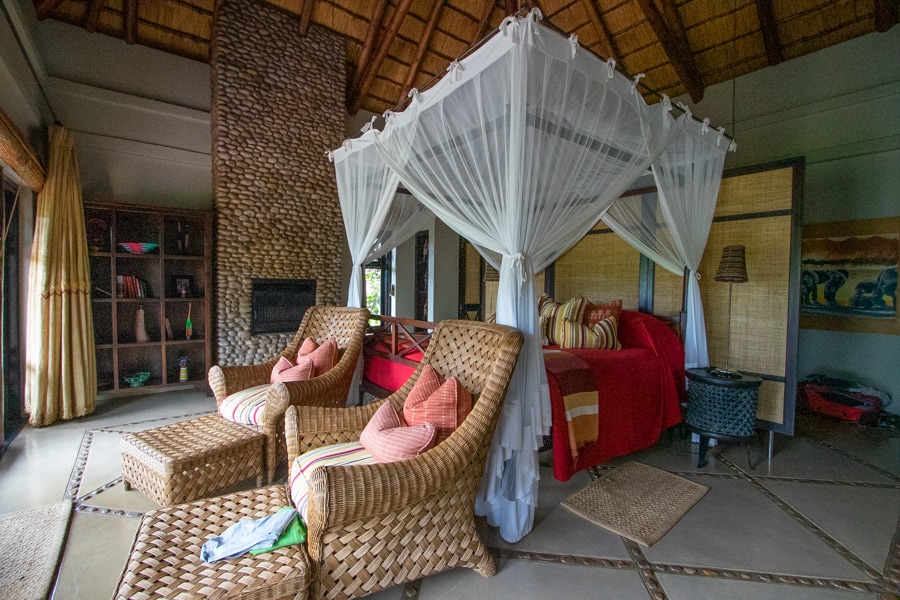
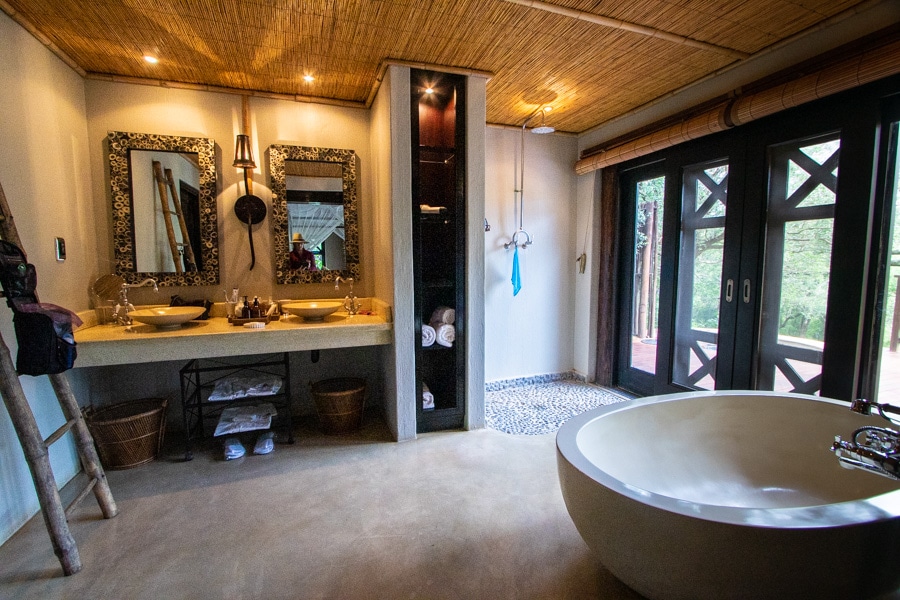
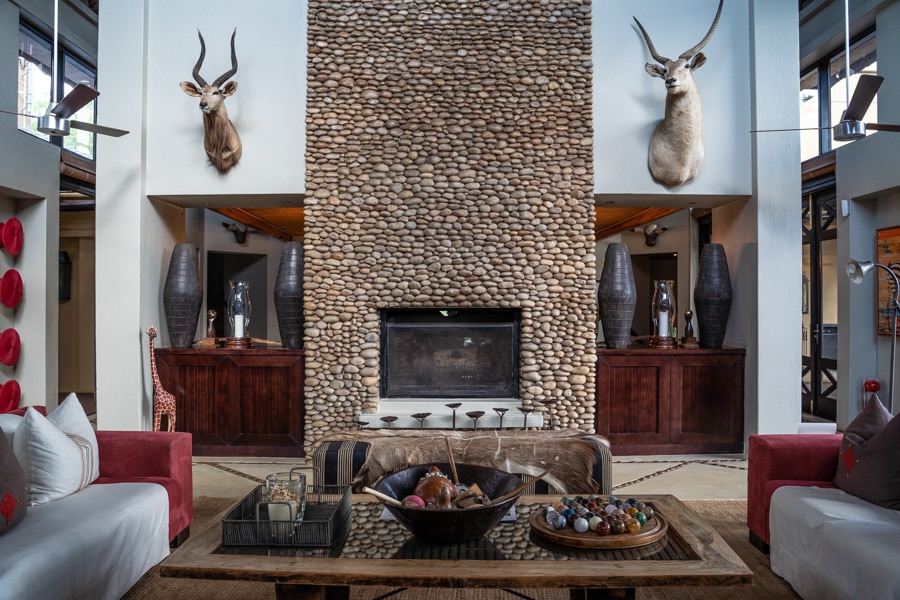
Tented Camp
There is also a glamping option for lodging too. I didn’t stay there, however, I did take a little tour of it. This is the most economical option for lodging at Thanda Safari – and it comes with the high quality that you would expect! Thanda Tented Camp offers an authentic safari adventure with 15 luxury safari tents!
$280 to $370 USD per night per person. All food/bev included plus 2 game drives a day and photo course.
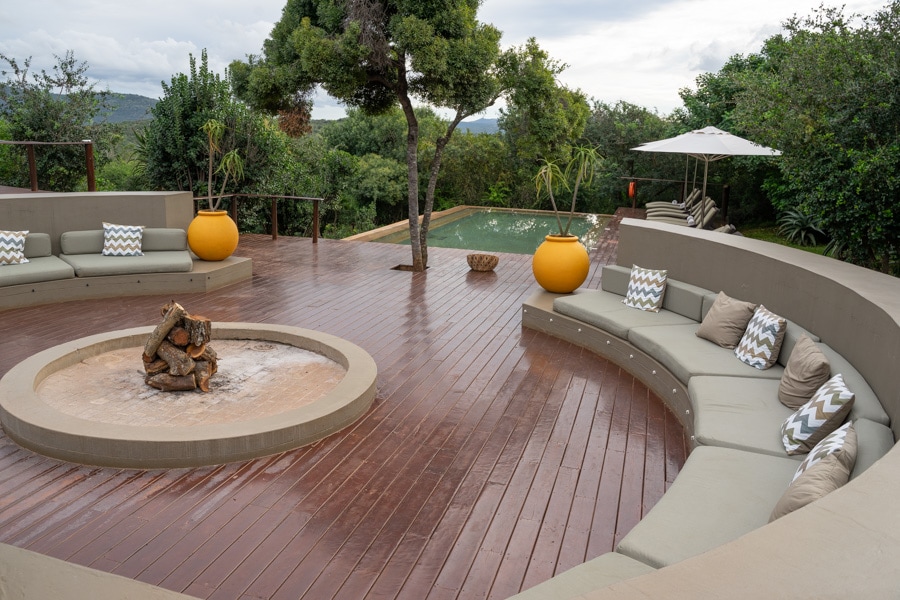
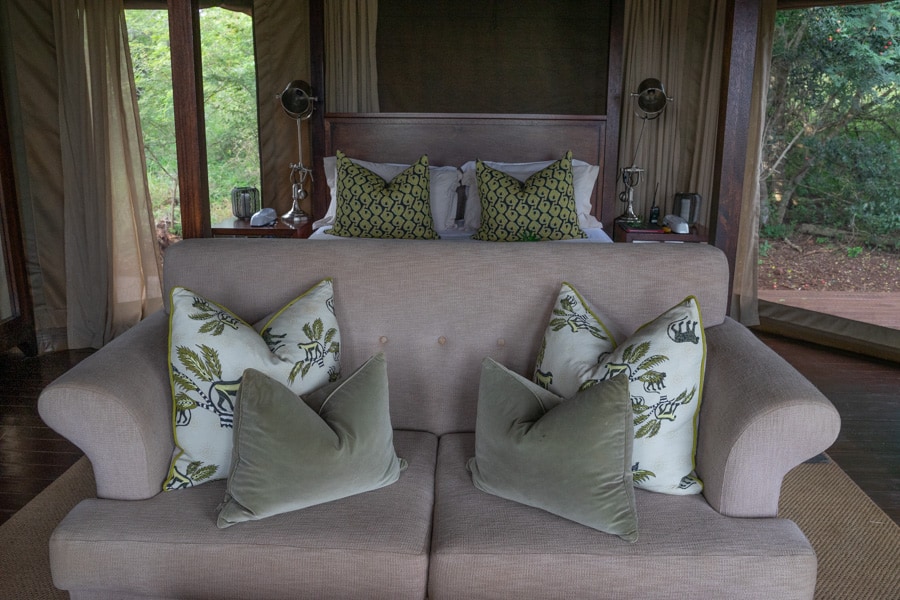
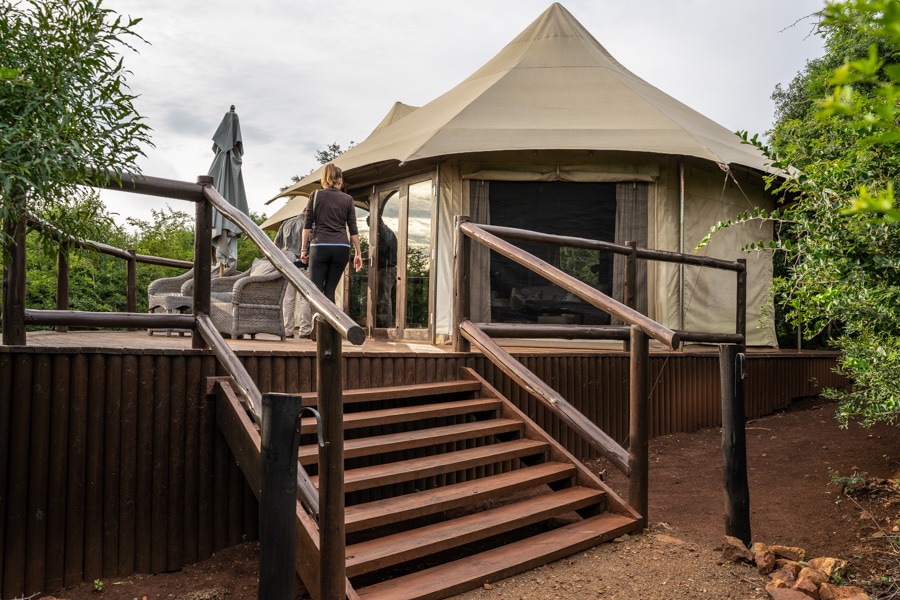
Still too expensive? Then why not try the Ulwazi volunteering option at Thanda and really get involved in the reserve? Learn more about Ulwazi here.
Costs range from $700 for one week of food/lodging, laundry, and hands-on bush training. Or $2650 for 4-week program.
Tip: Avoid Jetlag When you Head to Your South Africa Safari
If you go to Thanda Safari, you’ll fly into Durban. I suggest you land in Durban and stay at the Oyster Box Hotel on the coast. It will allow you one day of downtime before you start your safari. You can relax in style and walk up and down the coast, have high tea, enjoy their curry bar, and lounge around with their hotel cat!

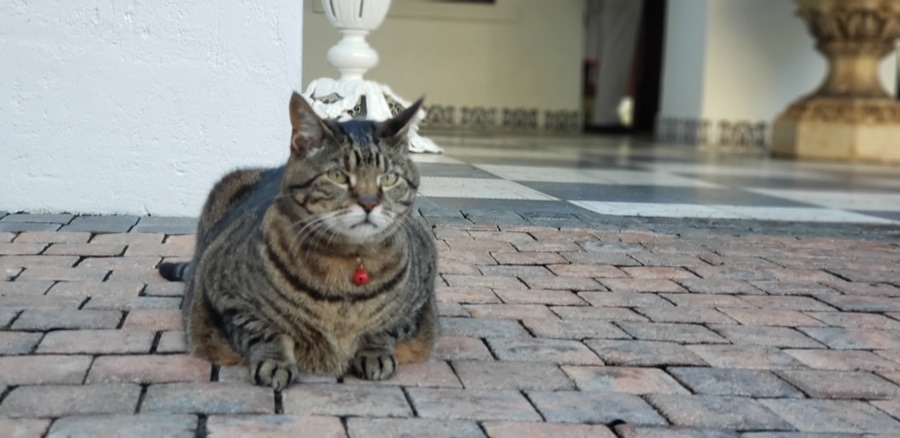
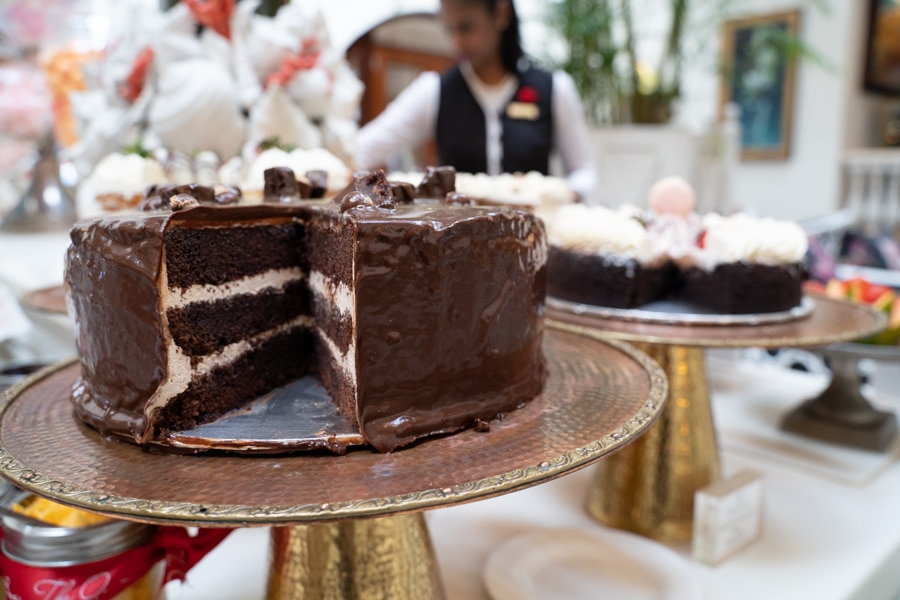
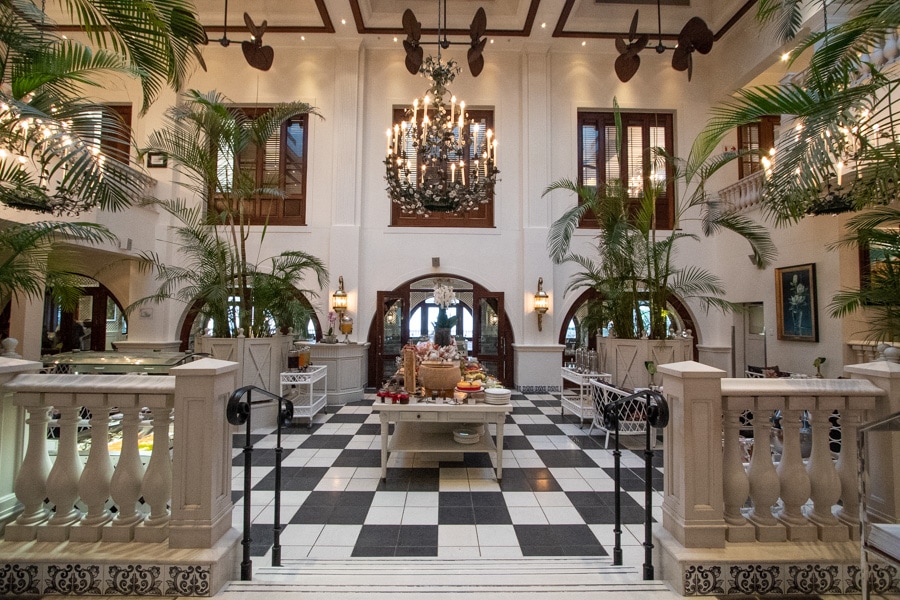
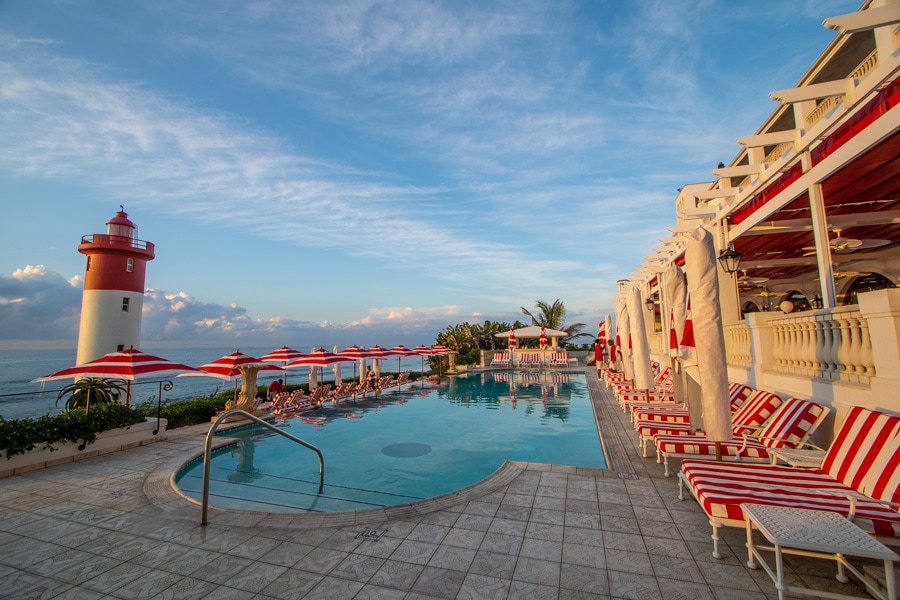
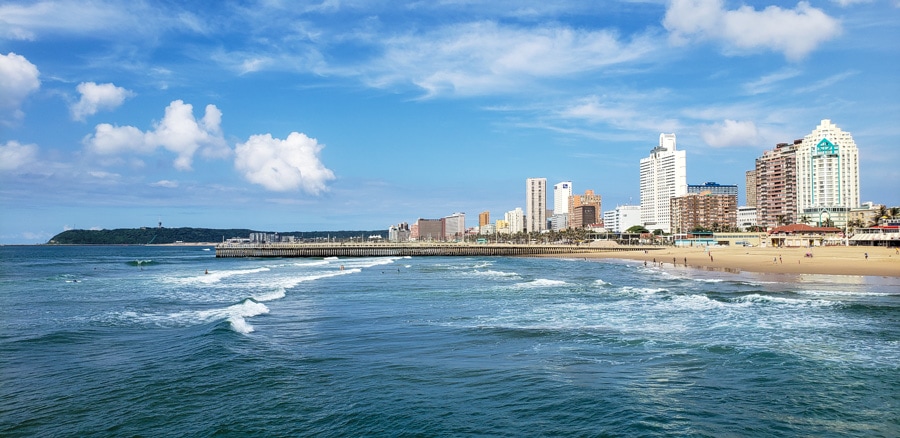
My curiosity was satiated. I learned an immense amount during my extra experiences at Thanda; walking away with a much greater understanding of wildlife and the people who run the reserves. It was more than learning about facts and figures, it was learning about how to really care about the animals and issues. Any time when travel results in transformation, that’s traveling deeper.
Follow my Travels
Thanda Safari Private Game Reserve
To see more details on Thanda’s unique experiences, check out the Thanda Website.
Disclosure:
I was a guest of Thanda Private Game Reserve during my stay. However all opinions expressed here are my own.
This post contains some affiliate links. If you choose to purchase items through these links, I will earn a small commission at no extra cost to you. These commissions help reduce the costs of running this site

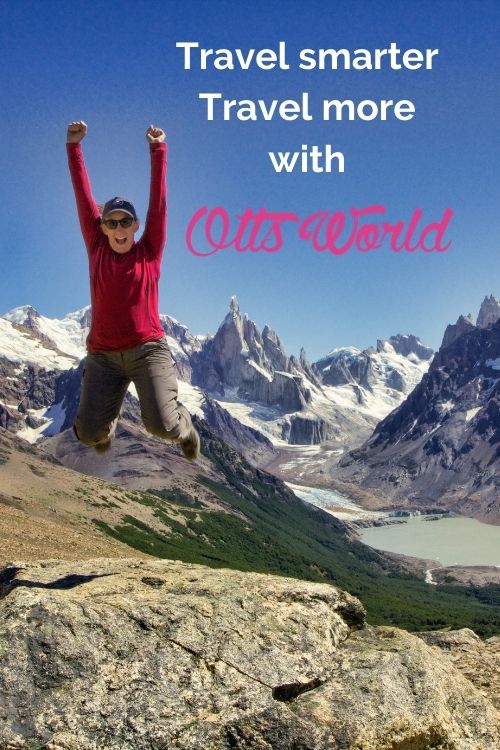
By Glenn August 25, 2019 - 11:39 pm
I’ve been on safari in Tanzania but I would love to go in South Africa as well. There seems to be a lot of options to consider. I’d be scared to get out on foot as well, but what a different perspective it would provide. So cool that you could get that close to the rhinos!